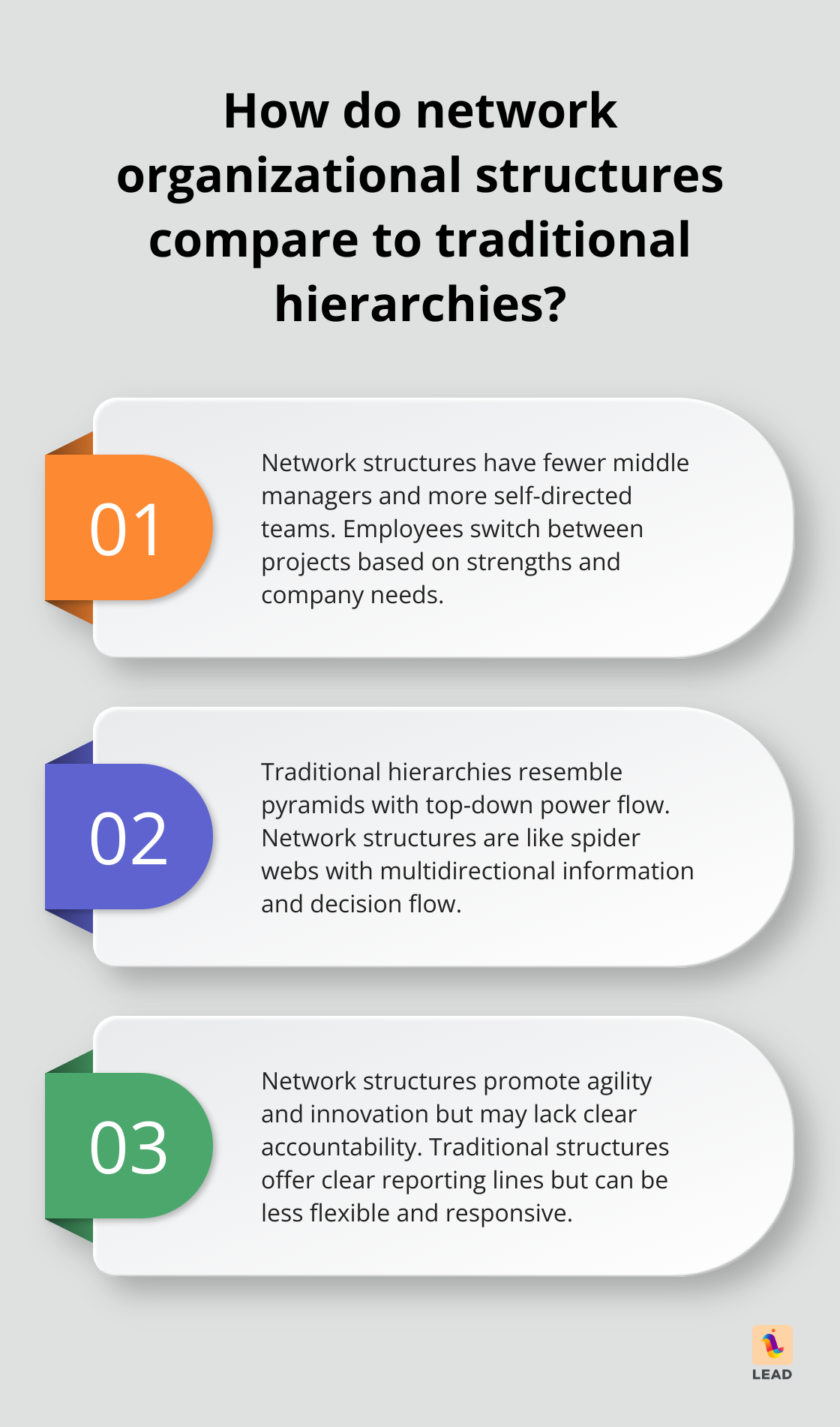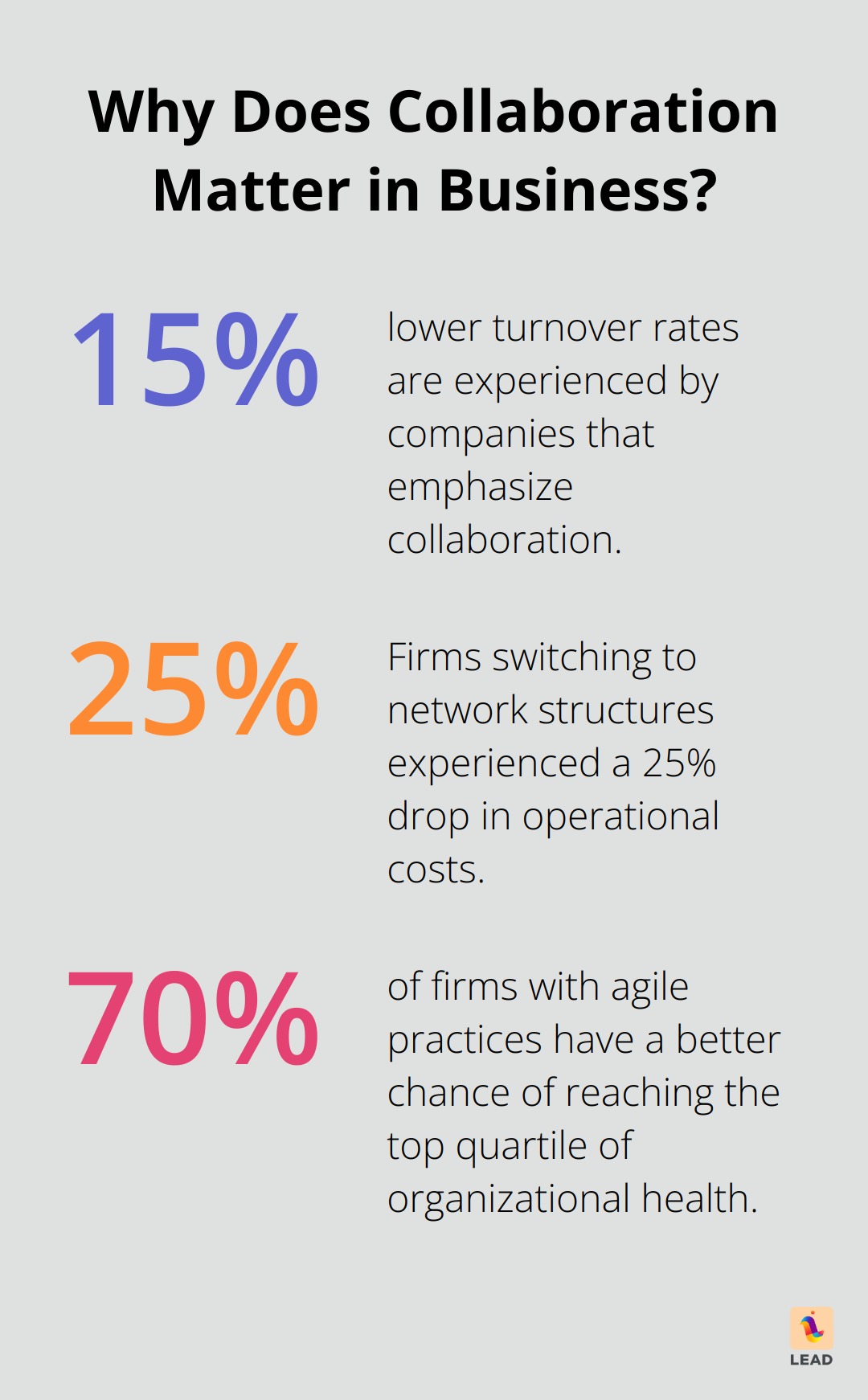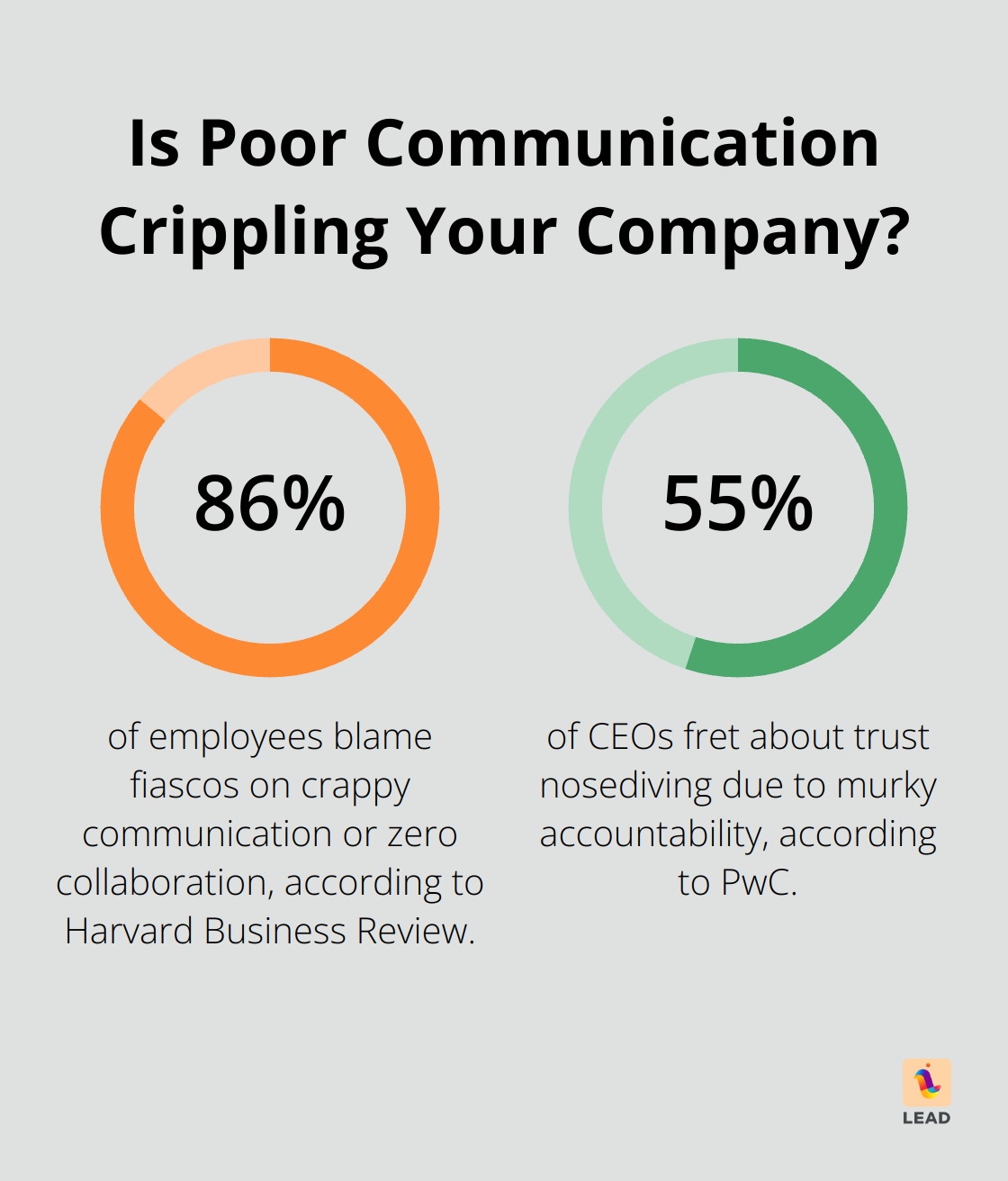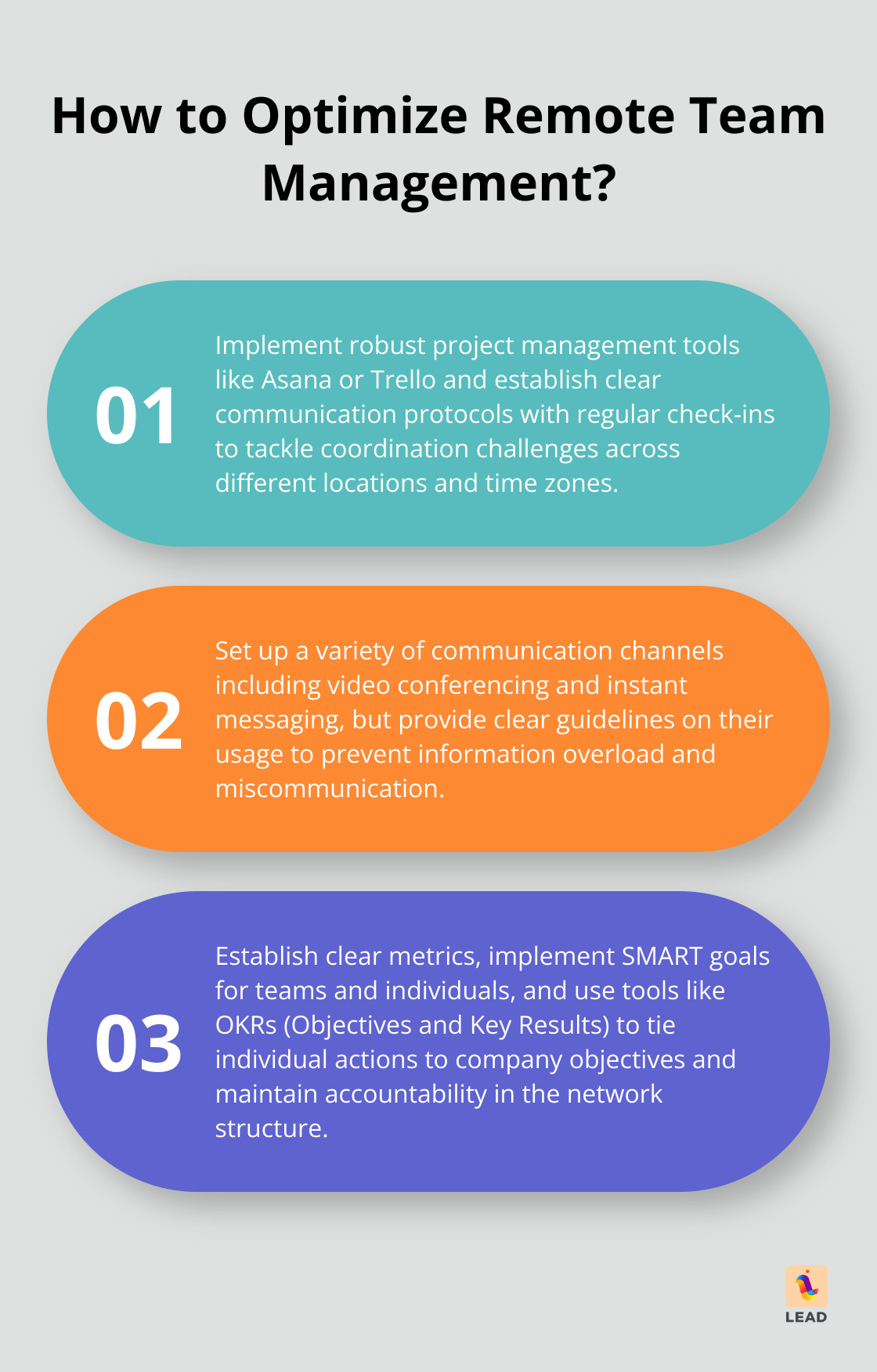At LEAD.bot, we’ve had the privilege of witnessing how companies structure themselves for success—or, sometimes, for unnecessary complexity. Think of organizational structure as the backbone of your company: it can either propel your business forward or weigh it down. Enter the network organizational structure, a modern approach that’s gaining traction in business circles. Unlike the traditional, top-down models you might be familiar with, this structure fosters collaboration and adaptability across teams and partners, both inside and outside your company.
Imagine a refreshing alternative to the old-school “command and control” style: a workplace where decision-making is shared, creativity thrives, and information flows freely. But, like any bold new idea, it has its strengths and its challenges. In this article, we’ll explore what makes network structures tick, their potential benefits, and the common pitfalls to watch out for—helping you decide if this innovative approach is right for your organization.
What Is a Network Organizational Structure?
The Essence of Network Structures
The Essence of Network Structures
At its core, a network organizational structure is about breaking away from rigid hierarchies. Picture your organization as a connected web rather than a tall pyramid. Instead of strict chains of command, diverse teams work together dynamically, focusing on shared goals and projects. Everyone contributes, and decision-making is spread across the group—a concept often called distributed leadership, where leadership responsibilities are shared rather than concentrated in one person.


This structure is designed for agility, meaning it can adapt quickly to changes, whether it’s shifting market conditions or new opportunities. Collaboration is key, with information flowing freely between teams and even external partners. It’s a flexible, fast-moving model that prioritizes responsiveness and innovation.
Key Components of Network Structures
In the real world, these network setups shed layers like a winter coat in springtime. Fewer middle managers (finally!) and more self-directed, multitasking teams. Employees hop between projects, playing to their strengths and what the company needs – a stark contrast to the old-school, stay-in-your-lane approach.
But, hey, all this flexibility? It’s not a free ride. With no clear bosses, who’s holding the accountability bag? These structures can spark innovation, sure, but without a firm grip, chaos lurks around the corner.
Network vs. Traditional: A Comparison
Picture those traditional hierarchies as pyramids – power trickles down as slowly as maple syrup on a cold morning. But network structures? They’re the spider webs of the corporate world. Information and decisions move in any direction, with teams popping up and dissolving like bubbles.
This freedom gives you an edge, but it’s not all smooth sailing. Without clear reporting lines, accountability’s a slippery fish. Networks can unleash creativity, but let’s not kid ourselves – without management, it can turn into a circus.
Practical Implementation Guidelines
Transitioning to a network organizational structure isn’t an overnight process. Companies need to start with a readiness assessment to evaluate if their current culture, technology, and workforce are prepared for the change. Begin with pilot programs—test the structure in a department or project team before scaling. Equip employees with training on collaborative tools and redefine roles to emphasize cross-functional flexibility.
As you implement, focus on building a clear communication framework, robust project management practices, and a roadmap for scaling. Define success criteria from the start, and regularly evaluate progress against these benchmarks.
Real-World Success Stories
A successful network structure isn’t just about creativity and agility—it’s about results. Companies should track metrics like employee satisfaction, collaboration scores, and innovation outputs. Time-to-market for products, customer satisfaction rates, and project completion timelines also serve as critical indicators. Tools like LEAD.bot can provide actionable insights into team dynamics and identify collaboration bottlenecks.
Some trailblazers have nailed the network structure game:
- W.L. Gore & Associates: This Gore-Tex powerhouse ditches traditional bosses for a lattice setup. Employees chat up anyone in the biz without detours.
- Valve Corporation: In this crew, the employee handbook boldly says, “Nobody ‘reports to’ anybody else.” It’s free-range innovation in the fast-paced world of gaming.
- Spotify: Their “Squad” model is network structure on steroids. Small, versatile teams (aka Squads) tackle specific features, keeping Spotify light on its feet in the streaming game.
Inspiring, right? But remember, network structures aren’t one-size-fits-all. They demand surgical implementation and constant minding. Jumping from the old-school model? Brace for a cultural shake-up and some growing pains.
Next, as we dig into network organizational structures’ perks, we’ll unveil how this cutting-edge model revamps workplace dynamics and kick-starts business success.
Why Network Structures Supercharge Organizations
Agility Unleashed
Network structures? They’re like jet fuel for agility. When you’re up against today’s ever-changing market dynamics, being able to pivot isn’t just nice-it’s necessary. Remember when COVID-19 turned the world upside down? Companies with network structures were doing the remote work dance almost overnight, while the old-school hierarchies were caught flat-footed for months.


And here’s a nugget from McKinsey: firms with agile practices have a 70% better chance of sliding into the top quartile of organizational health (whatever that is, it sounds good). This health transmutes directly into performance-think 30% more efficiency, 50% better operational performance, and a 20% uptick in customer satisfaction. Charming, right?
Collaboration Amplified
Not all industries adopt network structures at the same pace. While tech companies thrive on the agility these structures offer, highly regulated industries like healthcare or finance face challenges due to compliance constraints. Legacy systems in manufacturing or traditional services can also create barriers.
However, industries like media, entertainment, and consulting, where creativity and project-based work dominate, often find network structures to be a natural fit. Understanding these nuances helps organizations customize their approach to suit their sector.
Network structures? They take a sledgehammer to silos. You get this culture where info zips around like lightning, and collaboration’s the name of the game (not just a hopeful buzzword).
Deloitte chimed in, saying companies that double down on collaboration are 5 times more likely to defy gravity with high performance. Plus, this collaborative mojo translates into real-world gains. We’re talking 15% lower turnover rates-employees stick around like bees to honey-and 2.5 times more revenue growth compared to the lone wolves of the corporate world.
Innovation Incubation
Think of network structures as greenhouses for innovation. They mash up diverse teams and spark a cross-pollination frenzy, setting the stage for creativity to go wild.
According to PwC, 74% of organizations bringing in network structures saw innovation light up like a Christmas tree. And this innovation isn’t just about shiny new toys-it’s about cracking tough nuts quicker and more skillfully.
Check out Procter & Gamble’s Connect + Develop program-it’s a masterclass in leveraging a network structure to mine external innovation gold, raking in over 2,000 killer products and billions in revenue. Not too shabby.
Emerging technologies, such as AI and machine learning, promise to amplify the power of network structures. AI can identify hidden collaboration patterns, while automation can reduce repetitive tasks, freeing teams to focus on innovation.
Globalization further highlights the need for network structures. In a world where businesses span continents, these structures enable faster cross-border collaboration and decision-making. However, adapting to diverse cultural norms and time zones remains a challenge.
Lean Operations
Why do more with more when you can do more with less? Network structures are the epitome of efficiency, optimizing resources and slashing redundancies. The endgame? Costs dive while productivity gets a solid leg-up.
Boston Consulting Group found that firms flipping the switch to network structures saw a juicy 25% drop in operational costs and a 20% productivity jump. A finely tuned, agile operation that leaves competitors eating dust.
Network structures hold immense potential for amplifying underrepresented voices. By breaking down silos, they create space for diverse perspectives to shine. However, they require intentional design to avoid perpetuating existing biases.
Organizations should actively incorporate inclusion strategies, such as diverse hiring practices and creating safe spaces for dialogue. Regular audits of team composition and decision-making processes ensure that everyone has a seat at the table.
Challenges Ahead
Sure, network structures are the cat’s pajamas, but they’re not all rainbows and unicorns. They come with their own set of roadblocks. But don’t sweat it-up next, we’ll tackle these bumps in the road and how to smooth them over, helping you milk every ounce of power from network structures.
While success stories abound, some companies have struggled to implement network structures effectively. A lack of clear accountability, insufficient training, or cultural resistance can derail the best intentions. For instance, some organizations underestimated the importance of leadership alignment, leading to fractured teams and decision paralysis.
Learning from these missteps, it’s clear that thoughtful planning, leadership buy-in, and a commitment to continuous improvement are non-negotiable.
The Dark Side of Network Structures
Coordination Chaos
Network organizational structures present a significant challenge: coordinating teams across different locations and time zones. We’ve got a study directly dishing up that team structure soups up teamwork coordination-which boosts team performance. Simple? Not so much.


To tackle this beast, companies need some robust project management tools and crystal-clear communication protocols. Think Asana or Trello (but don’t kid yourself-they’re not waving any magic wands). Regular check-ins, well-defined roles-that’s the secret sauce.
Communication Conundrums
Network structures… they’re a jungle where info gets seriously mangled. Harvard Business Review throws us a stat: 86% of employees blame fiascos on crappy communication or zero collaboration.
What to do? Well, set up a buffet of communication channels. Video conferencing gets you face-to-face vibes, and instant messaging zips those quick questions. But hey, overload alert. Clear guidelines on channel use cut the clutter.
Culture Clash
Maintaining a cohesive culture in this setup? It’s like herding feral cats. Team-building is key; just make sure it’s not all about work-work-work.
Fight back by doubling down on core values. Host regular company-wide meetings (yes, Zoom works) to keep everyone in the loop. Celebrate wins across the org-unify the tribes.
Accountability Anarchy
In these structures, welcome to the land of fuzzy lines, where accountability evaporates. If everyone’s in charge, no one’s in charge. A little nugget from PwC: 55% of CEOs fret about trust nosediving due to murky accountability.
Here’s the plan: slam down clear metrics and relentless performance reviews. Roll out SMART goals for teams and folks. Tools like OKRs (Objectives and Key Results) tether individual actions to company dreams. Regular one-on-ones with team leads nip accountability issues in the bud.
In a network structure, leadership isn’t about issuing orders—it’s about guiding, coaching, and enabling teams. Leaders need to foster an environment of trust, where employees feel empowered to take initiative and own outcomes.
Distributed leadership takes this a step further by spreading decision-making authority. Leaders act as facilitators, ensuring teams have the resources they need and aligning them with the organization’s strategic vision.
Technological Dependence
It’s a tech jungle out there-network structures lean hard on tech for chit-chat and team-ups. When systems crash or staff can’t tech, chaos reigns. Gartner’s study spills the beans: 70% of workers haven’t cracked the tech at work.
How to dodge this bullet? Pour funds into rock-solid, no-brainer tech, and make training count. Regular tech checks and updates keep the gears grinding. (Fun fact: tools like LEAD.bot can make tech transitions less painful, a true lifesaver for rookies in network setups.)
Cultural transformation is the backbone of a successful network structure. Start by building buy-in at every level, using storytelling and transparent communication to articulate the benefits. Involve employees in designing the new structure to increase ownership.
To maintain a cohesive culture, focus on shared values and frequent communication. Celebrate wins across teams and encourage cross-departmental social interactions. Regular feedback loops help identify and address cultural issues early.
Final Thoughts
Network organizational structures-think flexibility, innovation, collaboration-are the new rockstars reshaping business. They give teams the power to pivot fast and share responsibility, but (here’s the kicker) they also bring headaches with coordination and accountability. Companies? They gotta plan… and plan hard, figuring out if they’re up for it and pinpointing where they can score big.


In our future, these network structures are going to be all over the place, especially where innovation’s the name of the game. The secret sauce? Balancing that oh-so-appealing flexibility with a bit of structure, so you get all the goodies without losing your focus or efficiency. Enter tools like LEAD.bot-key players in building those essential connections and insights for a networked world.
But hey, it’s not all sunshine and rainbows. You gotta weigh the pros and cons of network organizational structures. Those savvy enough to ride this wave-leveraging the right tech-will craft teams that are resilient, adaptable, and crushing it in performance. It’s a game plan that sets companies up to not just survive, but thrive, in the ever-shifting workspace of tomorrow.












